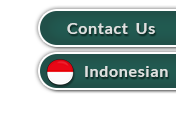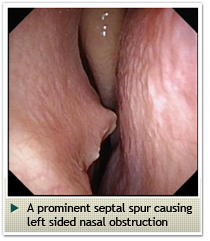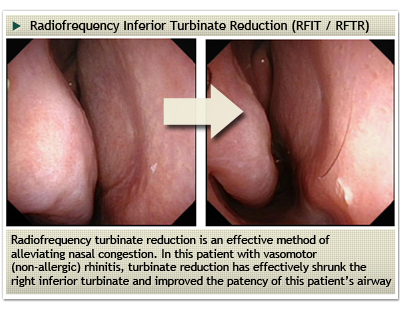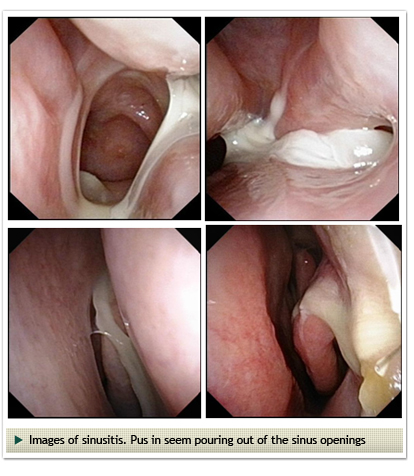

ENT Specialists in Singapore spend the majority of their time helping patients with nose and sinus problems. In primary care, ENT conditions make up about 15-20% of a general practitioner’s work load and nose, sinus and allergy make up the bulk of common ENT complaints. In our ENT Clinics in Singapore, our ENT Specialists devote a considerable amount of time diagnosing and assessing nose and sinus conditions in adults and children.
Diseases of the nose and sinuses affect many people and are a cause of substantial misery. Inflammation of the nose is called rhinitis, whereas inflammation of the sinuses is called sinusitis. The sinuses are air filled spaces within the skull that drain into the nose. Invariably any inflammation in the nose involves the sinuses and vice versa. Hence the term rhinosinusitis is now often used to reflect the co-existence of rhinitis with sinusitis.
Rhinitis may be allergic or non-allergic (intrinsic or vasomotor rhinitis) and sinusitis may be acute (under 12 weeks) or chronic (more than 12 weeks in duration).

The following are advances in the areas of allergy management and rhinology which I commonly employ in my clinical practice
Nose and sinus problems cause a variety of symptoms that affect one's quality of life. These include nasal congestion or blocked nose, rhinorrhoea (runny nose), itching (and sneezing), changes in smell, pain / pressure, nose bleeds (epistaxis) and acquired nasal deformity.
I learnt much about nasal and sinus diseases during my years training in London. I was fortunate to train with some of the leading sinus surgeons in the United Kingdom. During my early years in ENT, I worked for Mr Ian Mackay at Charing Cross Hospital in West London. Mr Mackay brought endoscopic sinus surgery (FESS) to the United Kingdom from Europe where Messerklinger and Stammberger had pioneered this surgery. Soon after I started working for Mr Mackay, he noticed my own problems with chronic rhinosinusitis. In December 2000, he undertook FESS on me and transformed the quality of my life. Being both a patient and now an ENT surgeon, I can attest to the great benefits of FESS and how the functional approach as espoused by Messerklinger and Stammberger is effective. This approach is less aggressive than approaches practised elsewhere in the developed world. It achieves excellent results without putting the patient at added unnecessary risk.
I subsequently trained at the Royal National Throat Nose and Ear Hospital where I was Senior Registrar in the Professorial Unit and worked under the tutelage of Professor Valerie Lund. I also worked with Glenis Scadding – an excellent Medical Rhinologist and Immunologist.
Nose bleeds
 Nose bleeds or epistaxis affect people of all ages. It is not uncommon for children to have a bout of nose bleeds that then settle. Repeated nose bleeds over several days require medical attention. In the young, it may be due to a prominent blood vessel in the front of the nose. This is an area called Little's area. Some patients will benefit from cautery of the vessels in this area. Nasal cautery may be undertaken by the application of silver nitrate (a chemical) or the use of electrocautery.
Nose bleeds or epistaxis affect people of all ages. It is not uncommon for children to have a bout of nose bleeds that then settle. Repeated nose bleeds over several days require medical attention. In the young, it may be due to a prominent blood vessel in the front of the nose. This is an area called Little's area. Some patients will benefit from cautery of the vessels in this area. Nasal cautery may be undertaken by the application of silver nitrate (a chemical) or the use of electrocautery.
Deviated nasal septum
 Nasal blockage or congestion may be due to a deviated nasal septum. This usually causes one-sided nasal blockage. Nasal congestion that alternates from one side to the other is usually due to enlarged turbinates. A deviated nasal septum may be corrected by surgery. The operation is called a Septoplasty and is done under a short general anaesthetic.
Nasal blockage or congestion may be due to a deviated nasal septum. This usually causes one-sided nasal blockage. Nasal congestion that alternates from one side to the other is usually due to enlarged turbinates. A deviated nasal septum may be corrected by surgery. The operation is called a Septoplasty and is done under a short general anaesthetic.
Enlarged Turbinates (Turbinate Hypertrophy)
 The nasal turbinates are shelves of bone that project from the side wall of the nasal cavity. The flesh lining these bony shelves are made of erectile tissue that contain pools (sinusoids) of blood. The lower (or inferior) turbinates are the largest and these may cause troublesome nasal congestion if they are enlarged. Inferior turbinate enlargement (or hypertrophy) may due to allergic rhinitis or vasomotor (non-allergic) rhinitis.
The nasal turbinates are shelves of bone that project from the side wall of the nasal cavity. The flesh lining these bony shelves are made of erectile tissue that contain pools (sinusoids) of blood. The lower (or inferior) turbinates are the largest and these may cause troublesome nasal congestion if they are enlarged. Inferior turbinate enlargement (or hypertrophy) may due to allergic rhinitis or vasomotor (non-allergic) rhinitis.
Turbinate hypertrophy may be treated by turbinate reduction. There are various ways of achieving turbinate reduction. One method is radiofrequency volume reduction of the turbinates. This is a simple procedure that takes no more than 10-15 minutes and can be performed in the clinic. It is no more painful than a simple dental procedure.
Sinusitis
 Sinusitis should more correctly be termed rhinosinusitis as the lining of the nose and sinuses are contiguous. Inflammation or infection of the nose and sinuses may be a short-lived (acute rhinosinusitis) or prolonged (chronic rhinosinusitis).
Sinusitis should more correctly be termed rhinosinusitis as the lining of the nose and sinuses are contiguous. Inflammation or infection of the nose and sinuses may be a short-lived (acute rhinosinusitis) or prolonged (chronic rhinosinusitis).
The treatment of acute rhinosinusitis is often undertaken effectively in the community by family doctors. In cases where symptoms of sinusitis last more than 12 weeks without abating, the condition has become chronic. Chronic rhinosinusitis is a difficult problem to treat. Many cases will respond to non-surgical treatment with nasal steroid sprays, sinus irrigation and the use of antibiotics. When medical treatment fails, it may be necessary to undertake surgery.
Chronic sinusitis may be present with nasal polyps. Typically nasal polyps cause a loss of smell and nasal blockage but little in the way of a runny nose.
Surgery of the paranasal sinuses is known as functional endoscopic sinus surgery (FESS). This surgery is undertaken through the nostrils and does not involve any incisions over the nose or face. FESS is highly effective in addressing structural problems that result in poor sinus drainage. This operation is done under general anaesthesia and may be done as a day case procedure. Image-guidance systems (IGS) allows for safe surgery – minimising potential damage to structures adjacent to the sinuses.
Isolated sinus disease can be treated by balloon sinuplasty. This involves using a guidewires, catheters and balloons to widen the openings of sinuses. After the sinus opening is widened, pus and infected debris may be washed out using an irrigation catheter.
Some patients will have nasal blockage due to internal and external nasal deformities. To adequate address their problem, I frequently recommend a FUNCTIONAL RHINOPLASTY which addresses the causes of nasal obstruction more comprehensively.
These operations are done with a colleague of mine who is a facial plastic surgeon to ensure the best outcome.